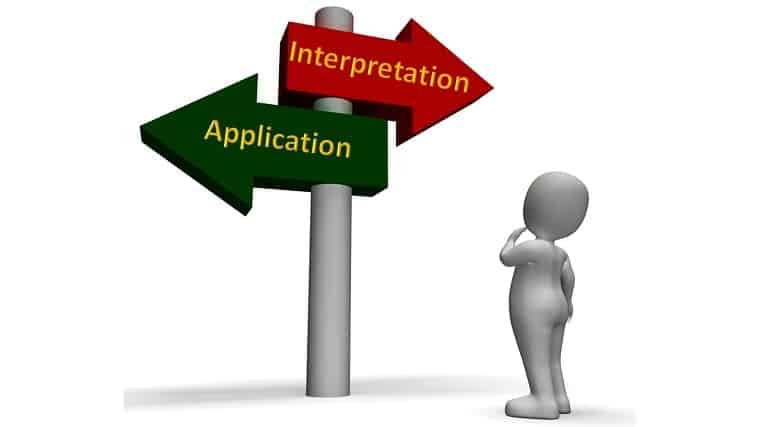Application Is Often Confused With Interpretation
We have come to a point in our discussion of Bible study methods where there is a lot of confusion. One of the reasons is terminology. If we aren’t using words in the same way we have trouble communicating. What do you think it means when I say “I perused a book”? It’s possible you misunderstood me as “peruse” is a commonly misused word.
People often confuse the words “interpretation” and “application.” A Bible passage has only one interpretation but can have many applications. Let’s start with definitions.
interpretation: “the action of explaining the meaning of something.” It’s what a passage means. It’s the principle or point that the author sought to communicate directly to the original readers.
application: “the action of putting something into operation.” What a passage means to anyone other than the original intended reader. It’s how the principle or point of the passage applies to the lives of anyone who reads it.
The reason I say there is only one interpretation for any particular passage of scripture is because of 1 Peter 1:20-21.
knowing this first of all, that no prophecy of Scripture comes from someone’s own interpretation. For no prophecy was ever produced by the will of man, but men spoke from God as they were carried along by the Holy Spirit.
We’ve all heard “People can make the Bible say whatever they want it to say.” Unfortunately that’s true but doesn’t negate 2 Peter 1:20-21. Indeed some people “make it say” whatever they want because it suits their fancy. Others come to different interpretations because they use different methods in studying the Bible. Different methods produce different results. Here are four common and different approaches to studying the Bible.
4 Different Methods of Interpretation
- Plain or literal method: This method accepts the plain sense of scripture unless the context gives us a reason to think otherwise. This is the normal approach used to interpret any book. It uses grammar, history and culture to understand a text. This is our approach.
- Allegory: This method sees a mystical or spiritual interpretation beyond the plain sense of the text.
- Liberal: This method rejects any possibility of the supernatural. It attempts to explain the text scientifically.
- Neo-Orthodox: This says the Bible becomes the Word of God as we read it. It imperfectly points us Jesus, the true Word of God.
You can see how it’s possible to confuse interpretation and application. If you believe there’s a spiritual meaning for a text then you may read any passage as if it is written directly for you. For you the interpretation and the application are tied together.
In our next post we will consider some wrong and right applications of Mark 1:1-8.
Do you have a question or comment? Please leave it below.


